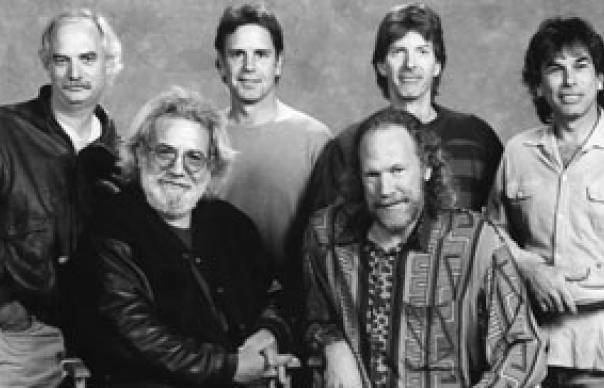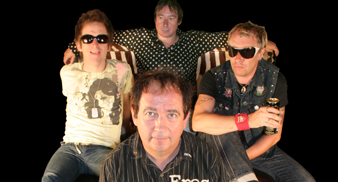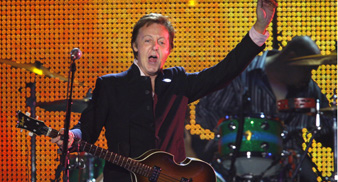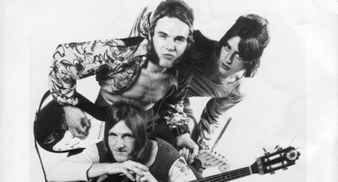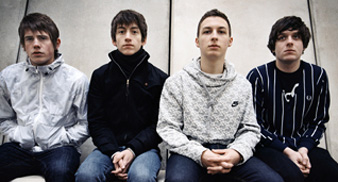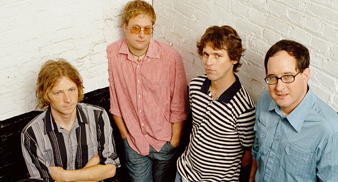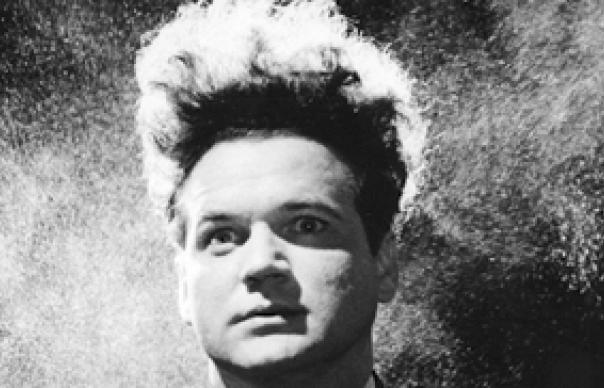Today, here’s Oh Mercy engineer Malcolm Burn, and there’s more folks to follow in the coming days. So make sure you check back to www.uncut.co.uk as we add to our Tell Tale Signs Special…
BOB DYLAN SPECIAL: The Complete Tell Tale Signs
In this month’s issue of Uncut, we celebrate the release of Tell Tale Signs, the Bootleg Series Vol 8, Bob Dylan’s astonishing 2 and 3CD collection of unreleased material from 1989-2006.
We spoke to the musicians, producers and crew who worked with him during this period. And now, here’s your chance to read the full, unedited transcripts of those interviews.
Today, we present the full interview with Malcolm Burn, and we have future transcripts coming up with Don Was, Daniel Lanois, Jim Keltner and others, following in a further eleven parts in the coming weeks, next one up this Wednesday (October 8)!
***
MALCOLM BURN
Multi-instrumentalist and recording engineer and mix on 1989’s Oh Mercy, Burn has produced a variety of albums including Emmylou Harris’ Red Dirt Girl and Iggy Pop’s American Caesar.
In the weeks prior to recording, when we were waiting for Bob to arrive and getting ready to make the record, I kept asking Dan [Lanois, producer], “Have you heard from Bob? Have you heard any of the songs we might be doing?” And Dan had heard like little snippets. Bob didn’t want to demo them or anything like that. He’d play like a few lines from songs, or one line. Y’know: “Most of the time, I’m clear focused all around… – what d’ya think? That’s a good one? Okay, great.”
So Dan was a little unclear as to what the material was going to be like. But, the two things I recall, was that Dylan had talked quite a bit about trying to get a piano-bass. And none of us really knew what a piano-bass was. I guess it’s kinda like what The Doors used to use, sort of a keyboard bass. He’d talked a lot about that. And he’d also talked about trying to do something with Fats Domino. So, we didn’t know anything about the material, but we did know he wanted a piano-bass, and that he was hoping to maybe do something with Fats, because we were doing the record in New Orleans.
So, other than that, we were just trying to get ready in the normal way, and then, I a week before we were due to start recording, we received a cassette from Bob. And I thought, Oh, great, we’re going hear some songs. We got this cassette, and it had this little note from Bob: “Listen to this, this’ll give you a good idea of what’s going on.” And so Dan and I and Mark Howard, the other engineer, we sat down to listen to this cassette, and we put it in the machine – and this Al Jolson music started playing.
And we were like, “What the Fuck? Al Jolson?” So, we fast-forwarded it, and it was just a whole tape of Al Jolson. And we looked back at the note, and it said. “Listen to this. You can learn a lot.” So Dan and I sort of looked at each other and – you know, Al Jolson’s great –but we sort of thought it was a bit odd.
But, y’know, anyway, when Bob arrived and we started making the record, I’d sort of forgotten about this. And then, one evening in the middle of recording, we were taking a little break, and somehow, something came up about favourite singers, and who were great influences, especially when it comes to phrasing. Bob had said a number of times that phrasing was sort of everything. You can have really great lyrics, but if you don’t deliver them properly, they’re not gonna mean a thing. And it’s quite true. And in this conversation, Bob said, “My two favourite singers are Frank Sinatra and Al Jolson.” And I thought, wow, now I get it. And it’s interesting, because when you have that in your head and you go back and listen to Al Jolson, you can sort of make the correlation with Bob Dylan, that concatenation, that kind of rapid-fire thing. That was kind of an interesting learning experience. Al Jolson. Bob Dylan. We had a couple of nice conversations. I remember at one point I’d asked him who his favourite sonwriters were, and without hesitation he said, “Gordon Lightfoot and Kris Kristofferson. Those are the guys.”
When it came to presenting songs, Bob would show up every day – well, I should say, every night. Our recording schedule was pretty nocturnal, he wouldn’t normally show up until about eight or nine at night, and we would usually work into the early hours, four or five, sometimes six or seven in the morning. That was just his schedule. Every night he would come in with a rolled-up bundle of paper, wrapped up with a rubber band, his lyrics that he was in the process of working on. And, say when we were working on something like “Most Of The Time”, he’d be sort of finishing the lyrics. He’d go over to where we had the coffee machine and put the lyrics out on the table and start scribbling and fixing up a few lines, and then he’d say, “Okay, let’s go.”
I really got the strong impression that, for him, the song really wasn’t ready to be a song until the lyrics were in place. By that I mean, it wasn’t necessarily about the melody or the chords. I remember, one night, we were going to do “Most Of The Time” and he sat down with his guitar, and I actually recorded this, I still have it somewhere, and he said, “Well, we could do it like this” – and he played the entire song, just him on acoustic guitar and harmonica, the archetypal Bob Dylan thing. He actually referred to himself in the third person, “That would be like a typical Bob Dylan way of doin’ it.” And then he did it another way, and he played it like a blues, really slow, and I recorded that, too. And then there was the version that we ended up doing on the record, which is quite spacious and has that real Dan Lanois imprint all over it.
So, it occurred to me that the treatment of the song was secondary. If the lyrics were in place, then it was just sort of, “Well what’s appropriate? What kind of record are we making? What kind of song do we need to stick in there? If it needs to be up-tempo, I’ll do the song up-tempo.” He wasn’t really precious about that aspect of it. The only thing that made any real difference to him was whether what he was saying was in place. Quite often, he would rewrite even one-line. Even when we were mixing the record, I’d be in the middle of the mix and he’d suddenly say, “Y’know what, I’ve just rewritten that line, can I re-sing it?” And I’d be like, Jeez, I’ve just finished the mix. So I’d be cutting out one line of a mix and editing in the new one to accommodate the re-write. And at that time, I was still editing on tape, so you’d physically cut it out and stick it up on the wall with a piece of sticky-tape. And then the next day, he’d come in and say, “Actually, let’s go back to the line I had, the way it was before.” And so I’d take the piece of tape off the wall and splice it back into the mix.
The one song that didn’t end up on that record that Dan and I were really pushing for, was “Series Of Dreams”. That was actually my favourite track on the record. I just thought, man, this is great. The feel of it, the lyrics, the whole vibe, it was just like from another world. And when we got to the stage where we were deciding which songs to put on the record, we kept advocating for this song. I remember we were standing in the courtyard of this house in New Orleans where we recorded, and Bob said, “Y’know what, I only put ten songs on my records.” And I said, “But, Bob, that song is so great.” And he goes. “Nah, nah. I’m only putting ten songs on there.”
I guess he was maybe only getting paid mechanical royalties in his contract, and so his attitude was basically, ‘Look, I’m gonna be making another record, I’ll put that song on the next one. They can get their next ten songs next year.’ Which made perfect economic sense to me. But I really liked the song. And finally he said, “Look, I don’t think the lyrics are finished, I’m not happy with them. The song’s too long. But I don’t wanna cut out any of the lyrics.” And so the song didn’t end up on the record, which was pretty disappointing for us, but, luckily, the recording did come out eventually. And, actually, he did cut out one of the verses.
He’s probably the hardest-working person I’ve ever been in the studio with. He’s really focused. Most people spend a lot of time yapping and gabbing and bullshitting around, but, even though we maybe only worked seven or eight hours a day, those seven or eight hours were full-on. There wasn’t any time for wasting time or talking about sports or bullshit. It was completely: we’re doing music now. A lot of other artists could learn something from that really strong work ethic. I remember thinking, “Yeah. This is why certain people achieve what they do. Because they don’t waste time.”
He’s kind of old-school, y’know. His attitude is, you don’t spend a lot of time making records. You don’t do millions of takes. You don’t overdub until the cows come home. You just get the song ready, you go in there, you play it, there it is. If someone makes a mistake, fuck it. I would constantly get grief from the instrumentalists on the record when we were working on the record, they’d say, “But, but, I gotta fix my part!” No, we’re not. We’re not doing another take, we’re not fixing your drum fills. Unless it’s like a real clunker, when someone is actually playing the wrong notes, we’re leaving it. I remember Bob would never tune his guitar, Dan was always having to tune it for him. He doesn’t want to fuck around with bullshit, he doesn’t care if the bass player sounds great, he’s only interested in the songs. And he has this touring schedule, and so you only have a set amount of time. It’s not like making, say, a U2 record, where it can go on for 18 months or whatever. Really, the day we finished the record, he got on the tour bus, and he was gone. Back on the endless tour.
One thing, early on during the recording, that he really pushed us to try and do, was he said, “Y’know, I really love the way my vocals sound when you record them on like, a boom-box, that little microphone. Why can’t I get my vocals to sound like that on a record?” So we actually tried recording with a boom-box. That didn’t quite work out. But it was one of the things he really pushed us on, and I was surprised, but he really pushed us so hard to get this really great vocal sound. He was one who kept pushing us to do that, “I want it more like this, more like that.” And I was really surprised because on the next record he did [Under the Red Sky], he didn’t get that vocal sound.
I remember when we were doing “Man In The Long Black Coat”, when he first started doing it, he was singing it maybe an octave higher. And it didn’t sound very good. It sounded pretty awful, in fact. And it might have been Bob or it might have been Dan, but someone recognised it wasn’t really working, and suggested singing it an octave lower, and that’s when he got that “Crickets – a-chirpin – water is high” and suddenly the phrasing came and I was like, “Fuck, this is really good.” It was a different song. But that was done very quickly.
Nothing on the record took a lot of takes really. The only thing we took a lot of time getting – and this is another interesting thing about is approach – is like, if he was fixing a vocal part. Y’know if he wanted to punch in just a part of a song again. It was never about whether it was in tune or out of tune or anything like that. It would be – let’s say he’s singing a replacement line – he’d sing it and you’d try to mix it into the original track, he’d listen to it and he’s say, “Ah, nah, nah, nah. That’s not the guy.” And I’d say, “The guy?” And he’d say, “Yeah. It’s not the same guy.”
And I really understood. It’s like acting, you’re trying to find the character or a motivation. So many singers I’ve worked with are so self-conscious about being in tune, they’re so worried about how they sound, and they’ll sing a line, and it’ll maybe sound better and it’ll be in tune – but it’s not the same personality. And I’ll say to them, “I don’t care if the first take is a little out of tune – it’s not the same personality.” And that was something I learned from Bob. I learned a lot from him on that about that kind of thing. So when he came to fixing up a vocal, I’d say to him: “Yeah that’s the guy.” And it would be the guy. The guy, the character he had invented for that particular thing. I mean an extreme example is, if you listen to “Lay, Lady, Lay.” Who’s that guy?
Bob, while were working, he never really spoke to the other musicans we had assembled. He’d speak to the people he knew or knew about, but he wasn’t really interested in making buddies with anyone. And he always wore this hoodie, y’know, and he’d just kind of play and sing. For the first two or days while we were recording, we had the Neville Brothers’ rhythm section there. And the Nevilles’ drummer, Willie Green, he came up to me after the second or third night, he comes in, and he came right up to me, I was sitting at the mixing board, and Bob was like, four feet away. And Willie says, “Man, I’ve been here for two or three days man. When the fuck’s Bob Dylan showing up? I thought we were making a record with Bob Dylan, man, where the fuck is he?” And I said, “Willie, he’s sitting right next to you.” “Oh. Is that Bob Dylan? Is that Bob Dylan right there?” “Yes, that’s Bob Dylan.”
And then, seriously, the bass player, Tony, he comes in and he comes up, and it turns out he didn’t know this was Bob sitting here either. And he says, “Man, that Bob Dylan is some weird motherfucker, man.” And Bob just sort of looked up and raised his eyebrow. And then he went back to working on his lyrics.
DAMIEN LOVE



